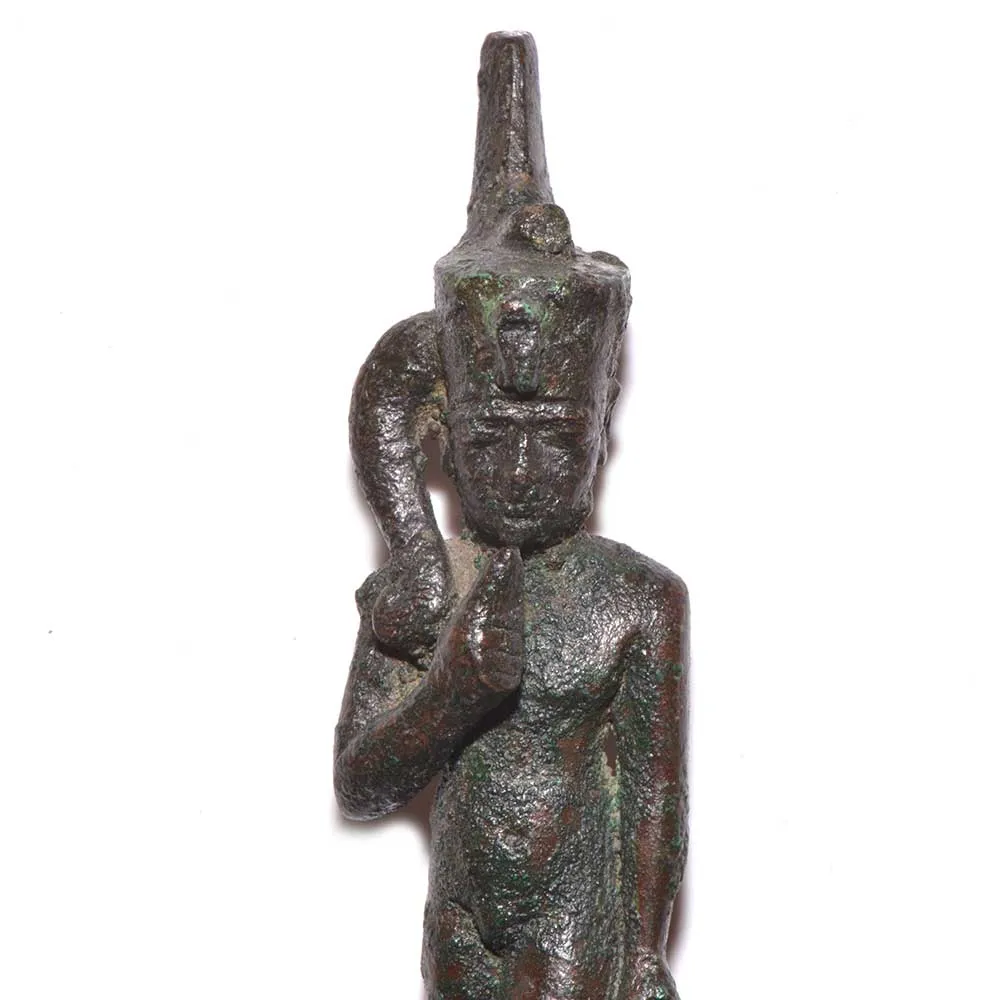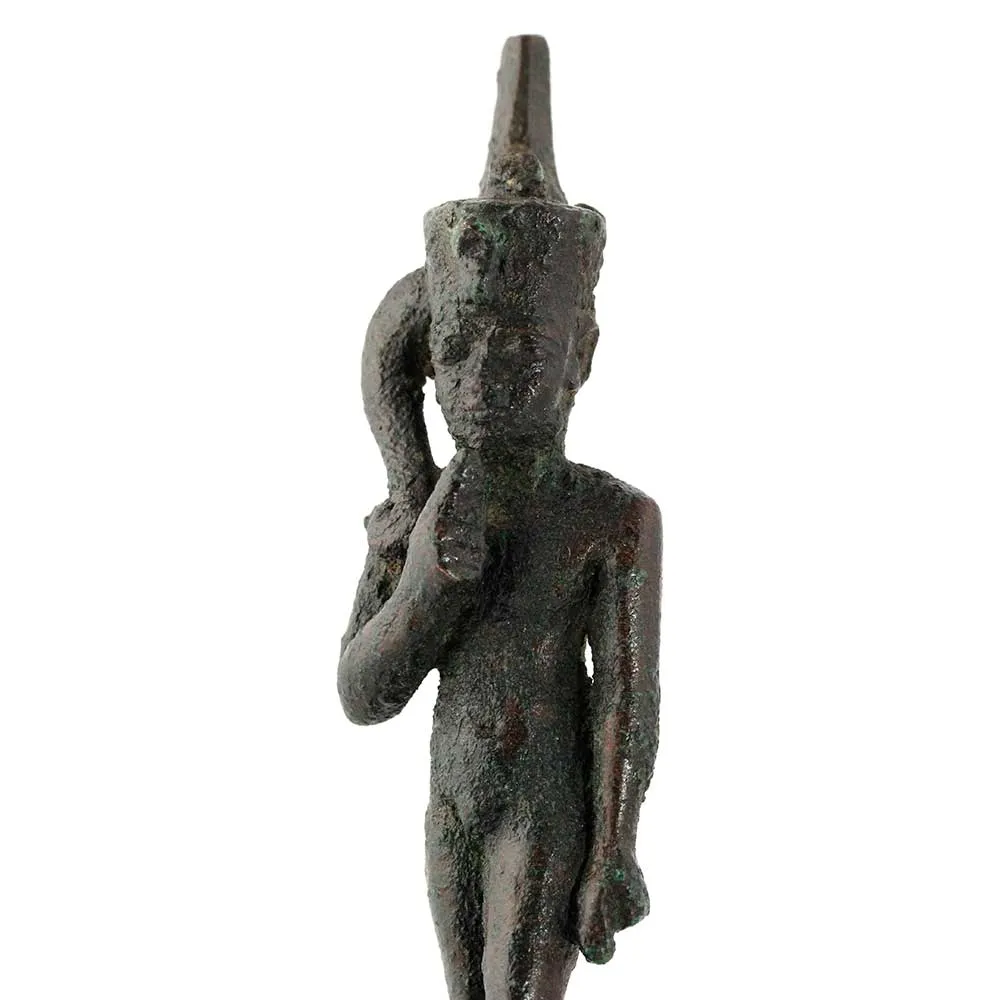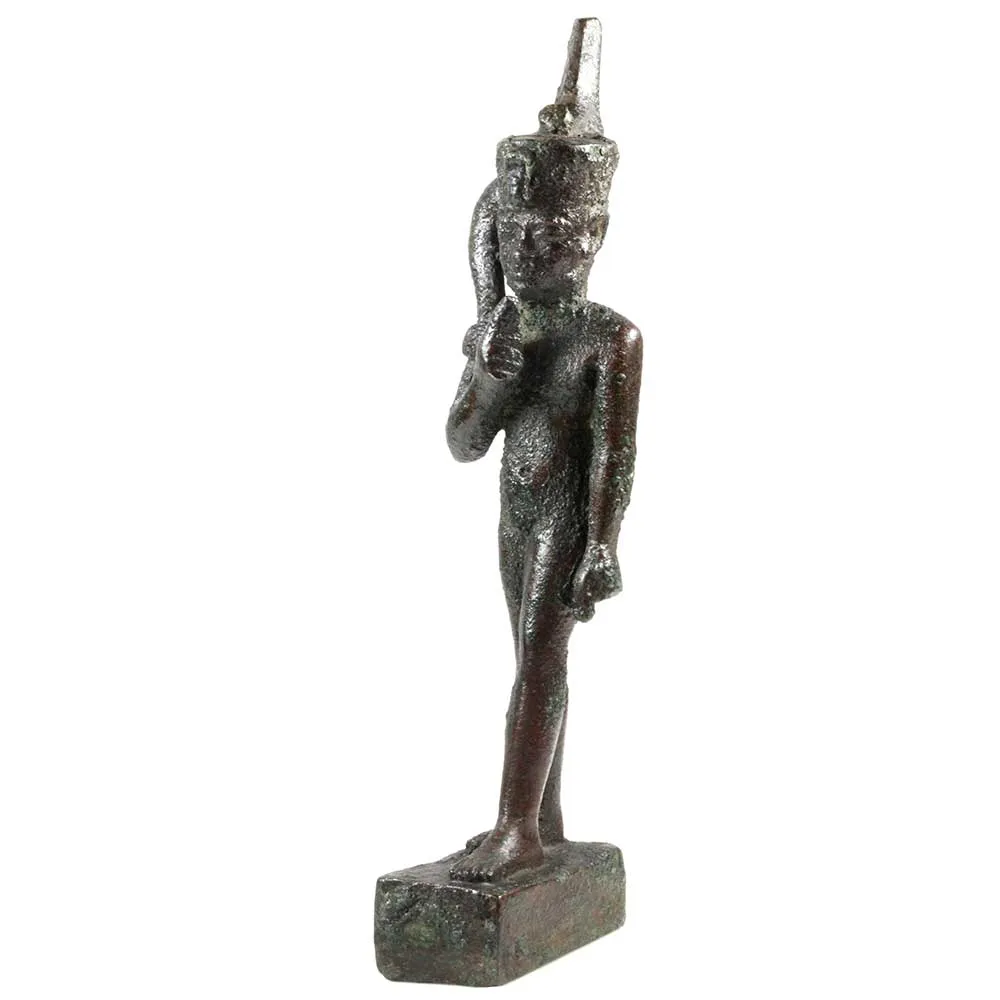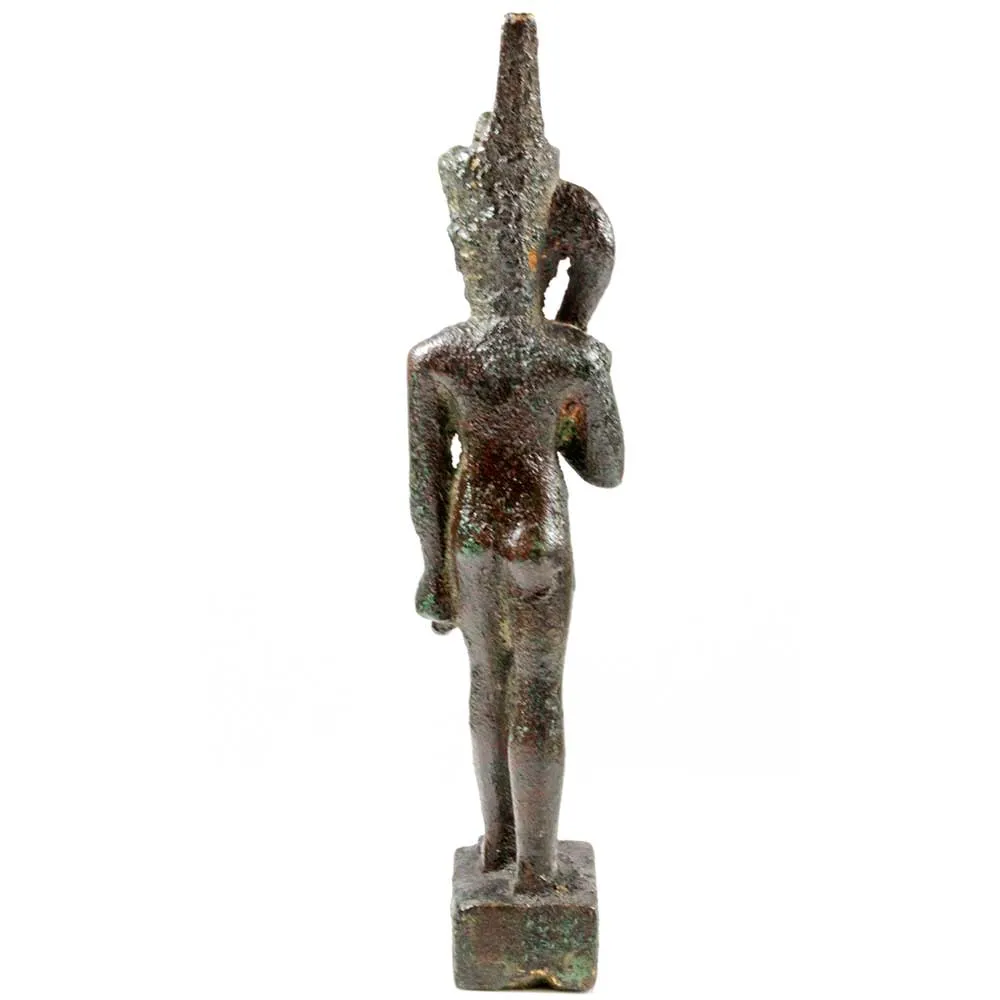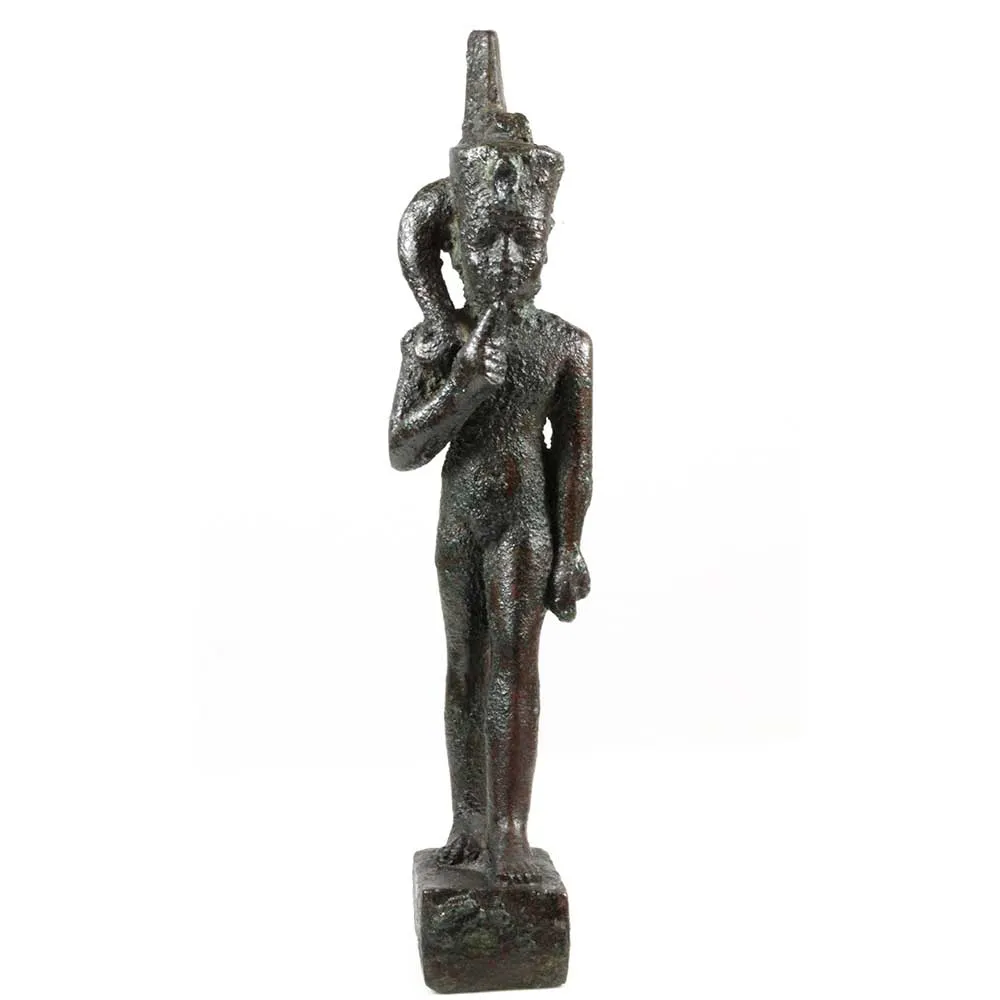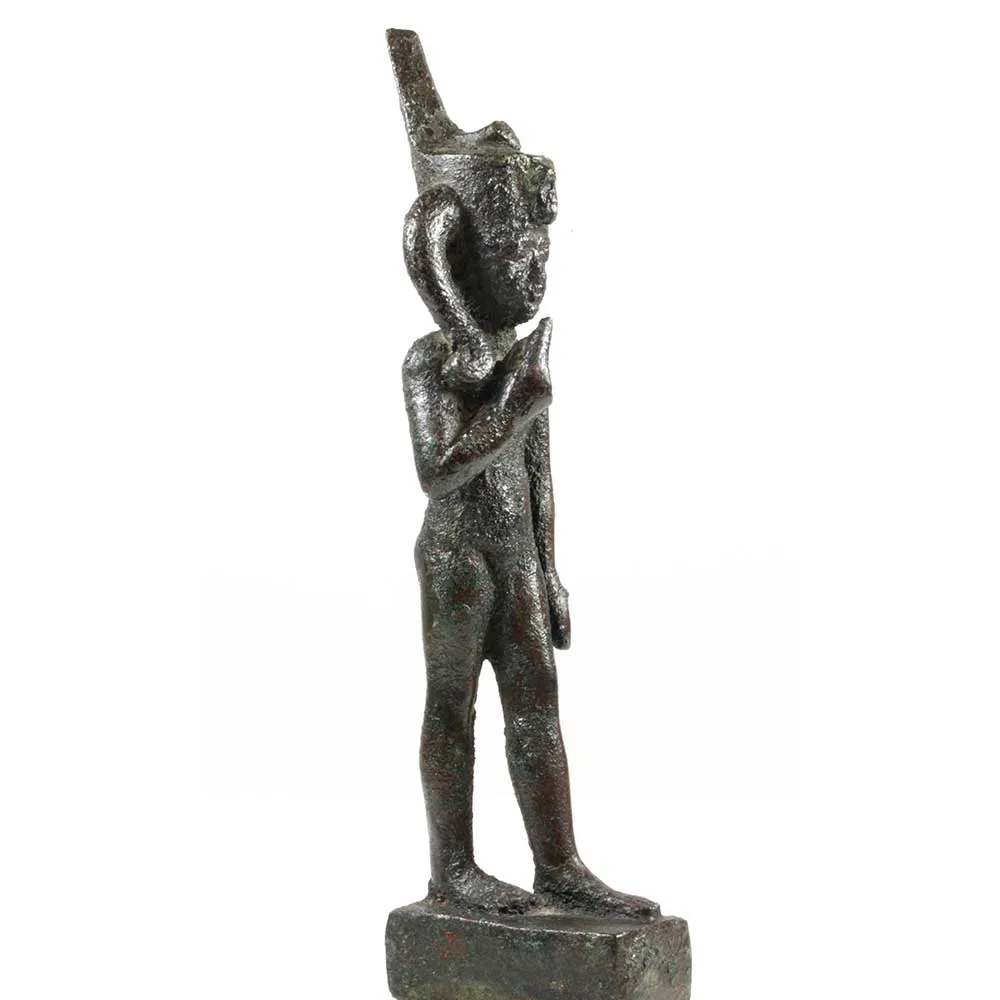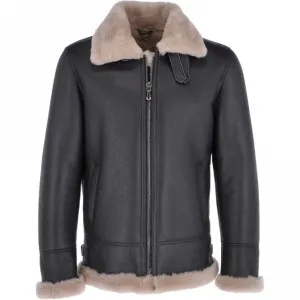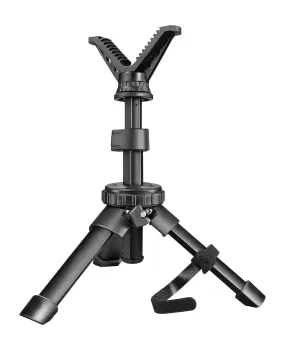This bronze figurine represents the god Harpokrates, i.e. Horus the child. The Greeks created the name of Harpokrates from the Egyptian 'Har-pa-khered', literally 'Horus-the-child'. He acted as an amuletic force warding off dangerous creatures and was a popular deity with the Phoenicians who were closely connected to Egypt by both geography and trade. As shown in this example, he was often represented as a naked child, with the right index finger to his mouth, wearing a headdress with a frontal uraeus and hair with a braided sidelock of youth curling at his right shoulder, striding forth on an integral rectangular base.
For a related example, see in the British Museum's collection of Egyptian antiquities.
Background: Harpokrates is sometimes shown on the lap of his enthroned mother, in bronze statue groups of the Late Period (661-332 BC), when these deities were particularly popular. They were seen as members of the ideal family, consisting of Osiris, Isis and Harpokrates.
According to myth, Isis revived her murdered husband Osiris to conceive a child. She fled to the Delta to give birth, hiding from her brother Seth, who was intent on seizing the throne of Egypt. When her son, Harpokrates, was born he was attacked by snakes, crocodiles and scorpions sent by his uncle. He was protected by the gods, and given power over dangerous creatures. His mother, Isis, was revered for her magical abilities, and the power that Harpokrates had over dangerous animals meant that both were regarded as protective deities.
Condition: Intact and in excellent condition overall.
Dimensions: 12.6 cm (4.9 inches)
Provenance: acquired from Susette Khayat, Ancient Arts Gallery, 5th Ave, New York City, in the 1950's and then by descent.





